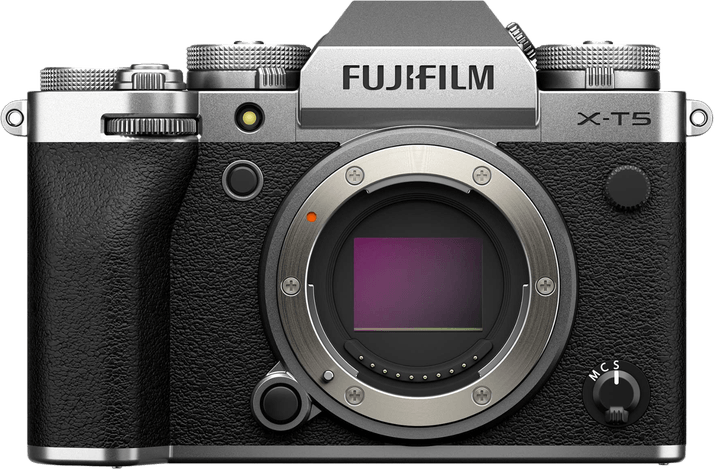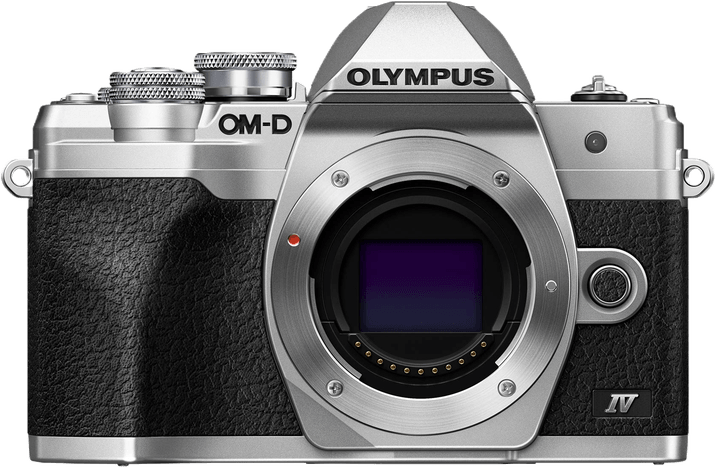Fujifilm X-T5 vs Olympus OM-D E-M10 Mark IV Comparison
Fujifilm X-T5

Olympus OM-D E-M10 Mark IV

The Fujifilm X-T5 takes the lead with a score of 81/100, while the Olympus OM-D E-M10 Mark IV trails behind at 63/100. Both cameras are mirrorless and have similar dimensions, with the X-T5 measuring 130 x 91 x 64mm and the E-M10 Mark IV at 122 x 84 x 49mm. However, the X-T5 weighs more at 557g compared to the E-M10 Mark IV’s 383g.
The X-T5’s higher score reflects its superior performance and features, justifying its higher launch price of $1699 compared to the E-M10 Mark IV’s $699. On the other hand, the E-M10 Mark IV has the advantage of being lighter, making it more portable and easier to carry around.
Given these differences, the Fujifilm X-T5 is the better choice for those seeking top-notch performance and advanced features, while the Olympus OM-D E-M10 Mark IV offers a more budget-friendly and lightweight option for casual photographers.
Fujifilm X-T5 vs Olympus OM-D E-M10 Mark IV Overview and Optics
The Fujifilm X-T5 outperforms the Olympus OM-D E-M10 Mark IV in optics, scoring 81/100 compared to 63/100. Both cameras share some common specifications, including a 15 fps shooting speed, CMOS sensor, and image stabilization. However, the Fujifilm X-T5 boasts superior features that contribute to its higher score.
The X-T5 has a 40-megapixel sensor, doubling the 20-megapixel sensor of the E-M10 Mark IV. This higher resolution enables the X-T5 to capture more detail and produce higher quality images. Additionally, the X-T5 utilizes the advanced X-Processor 5, which enhances image processing capabilities and overall performance. The X-T5 also benefits from a larger APS-C sensor size, compared to the Micro Four Thirds sensor of the E-M10 Mark IV. A larger sensor size typically results in better image quality and low-light performance. Furthermore, the Fujifilm X lens mount accommodates a wide range of high-quality lenses, allowing for greater versatility and adaptability.
On the other hand, the Olympus E-M10 Mark IV has a DXOMARK sensor score of 73, although it is important to note that DXOMARK does not score Fujifilm cameras. The E-M10 Mark IV also features a 4:3 aspect ratio, which may be preferable to some users over the 3:2 aspect ratio of the X-T5.
Despite the Olympus E-M10 Mark IV’s strengths, the Fujifilm X-T5’s higher megapixel count, advanced processor, larger sensor size, and versatile lens mount make it the superior choice in terms of optics. While the E-M10 Mark IV may have some advantages, such as its DXOMARK score and aspect ratio, the X-T5’s overall performance and image quality set it apart as the clear winner.
Fujifilm X-T5 vs Olympus OM-D E-M10 Mark IV Video Performance
The Fujifilm X-T5 outperforms the Olympus OM-D E-M10 Mark IV in video capabilities, with a score of 87/100 compared to the Olympus’s 83/100. Both cameras share some common specifications, such as a maximum video frame rate of 60fps and built-in time-lapse functionality. However, the Fujifilm X-T5 offers superior features that contribute to its higher score.
A significant advantage of the Fujifilm X-T5 is its maximum video resolution of 6K, compared to the Olympus OM-D E-M10 Mark IV’s 4K resolution. The Fujifilm’s 6K resolution, with dimensions of 6240×4160, provides greater detail and clarity in video recordings. This higher resolution allows for better post-production editing, such as cropping and zooming without losing quality.
Despite its lower score, the Olympus OM-D E-M10 Mark IV still delivers quality video with its 4K resolution and dimensions of 3840×2160. The 60fps frame rate and time-lapse functionality are also shared features. However, the Olympus camera does not surpass the Fujifilm X-T5 in any video-related aspects.
The comparison reveals that the Fujifilm X-T5 is the superior choice for video capabilities due to its higher resolution and overall score. The Olympus OM-D E-M10 Mark IV, while offering quality video recording, does not excel beyond the Fujifilm X-T5 in any aspect. Therefore, the Fujifilm X-T5 is the better option for those prioritizing video performance.
Fujifilm X-T5 vs Olympus OM-D E-M10 Mark IV Features and Benefits
The Fujifilm X-T5 outperforms the Olympus OM-D E-M10 Mark IV in features, scoring 85/100 as opposed to the Olympus’ 70/100. Both cameras share several specifications, including a 3-inch touchscreen, flip screen, and absence of GPS. Additionally, both cameras possess WIFI and Bluetooth capabilities.
The Fujifilm X-T5 is superior due to its higher screen resolution of 1,840,000 dots, compared to the Olympus OM-D E-M10 Mark IV’s 1,040,000 dots. This difference in resolution allows for a clearer and more detailed display on the Fujifilm X-T5, improving the user’s experience when navigating menus and reviewing captured images.
The Olympus OM-D E-M10 Mark IV, despite its lower feature score, may still have advantages in other areas not discussed in this comparison. However, based on the available information, the Fujifilm X-T5 is the better camera in terms of features.
Considering the differences in feature scores and screen resolution, the Fujifilm X-T5 is the recommended choice for users seeking a camera with superior features. The Olympus OM-D E-M10 Mark IV may still be a viable option for those who prioritize other aspects of a camera, but it falls short in the features category compared to the Fujifilm X-T5.
Fujifilm X-T5 vs Olympus OM-D E-M10 Mark IV Storage and Battery
The Fujifilm X-T5 outperforms the Olympus OM-D E-M10 Mark IV in storage and battery, scoring 76/100 against 35/100. Both cameras have USB charging capabilities and accept SD, SDHC, and SDXC memory cards. However, the X-T5 has two memory card slots, while the E-M10 Mark IV has only one. Additionally, the X-T5 uses UHS-I compatible cards, while the E-M10 Mark IV is compatible with the faster UHS-II cards.
The X-T5’s superior battery life is another advantage, offering 580 shots per charge compared to the E-M10 Mark IV’s 360 shots. The X-T5 uses the NP-W235 battery type, while the E-M10 Mark IV uses the BLS-50 battery type.
Although the E-M10 Mark IV has a lower score in storage and battery, its compatibility with UHS-II memory cards offers faster data transfer rates. However, this advantage is overshadowed by the X-T5’s longer battery life and additional memory card slot.
To conclude, the Fujifilm X-T5 is the better choice for storage and battery performance, with the Olympus OM-D E-M10 Mark IV offering one advantage in memory card compatibility.
Fujifilm X-T5 vs Olympus OM-D E-M10 Mark IV – Our Verdict
Are you still undecided about which camera is right for you? Have a look at these popular comparisons that feature the Fujifilm X-T5 or the Olympus OM-D E-M10 Mark IV:

